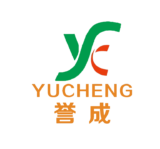When purchasing a CNC lathe, many buyers wonder: Why is there such a wide gap in prices for machines that look similar? In reality, the CNC lathe cost is influenced by multiple key factors, such as machine size and structure, control system, spindle power, brand, and automation level. If you’re struggling with procurement decisions, this article will guide you through a detailed breakdown of CNC lathe cost components—so that price becomes not a barrier, but a tool to help you choose the right machine for your production needs.

1. 🔧 Machine Size & Structure
The size and rigidity of a lathe directly affect its price. Larger machines with heavy-duty casting and reinforced beds cost more due to increased material usage and design complexity.
| Machine Size | Typical Cost Range |
|---|---|
| Mini/Benchtop CNC Lathes | $3,000 – $10,000 |
| Standard Slant Bed CNC Lathes | $10,000 – $35,000 |
| Heavy-Duty Industrial CNC Lathes | $35,000 – $100,000+ |
✅ Tip: Choose the smallest machine that meets your production needs to avoid unnecessary cost.
2. 💻 CNC Control System
The control system is the brain of the lathe—and a major cost driver. High-end systems offer better performance, more features, and global support.
| System Brand | Cost Impact | Features |
|---|---|---|
| FANUC / Siemens | High | Reliable, global support, advanced features |
| Mitsubishi / GSK / SYNTEC | Medium | Balance of cost and function |
| Local Chinese systems | Low | Affordable, basic functionality |
✅ Tip: If precision and reliability are critical, invest in a mid-to-high-tier control system.
3. ⚙️ Spindle Motor Power & Speed
Stronger spindles support higher RPM and tougher materials—but add to the cost.
- 3.7kW–7.5kW (Light parts): $8,000 – $15,000
- 11kW–15kW (Steel & stainless steel): $15,000 – $30,000
- Above 18kW (Heavy-duty machining): $30,000+
✅ Tip: Match spindle power to material hardness and part size to avoid overspending.
4. 🛠️ Turret Type & Tool Capacity
A CNC lathe’s turret determines how many tools it can use and how fast it can change tools.
| Turret Type | Tool Capacity | Price Impact |
|---|---|---|
| Manual Tool Post | 4–6 tools | Low |
| Electric Turret | 8–12 tools | Medium |
| Servo Turret / Y-axis Live Tooling | 12+ tools | High |
✅ Tip: For complex parts or automation, opt for servo turrets with live tooling.
5. 🤖 Automation Options
Add-ons like bar feeders, robotic arms, and chip conveyors increase cost—but greatly reduce labor and improve efficiency.
- Manual loading system: baseline cost
- Semi-automatic (bar feeder): +$2,000–$5,000
- Full automation (robotic arm, gantry loader): +$8,000–$20,000+
✅ Tip: Consider automation if you plan for long-run, unattended operation.
6. 🏷️ Brand & Country of Origin
Brand reputation and country of manufacture influence both price and perceived quality.
| Origin | Typical Cost Level | Notes |
|---|---|---|
| China | Low to Medium | Cost-effective, improving quality |
| Taiwan / Korea | Medium | Good balance of price & performance |
| Japan / Germany | High | Top-tier precision and reliability |
✅ Tip: Chinese CNC lathes offer excellent value—especially from reputable OEMs with export experience.
7. 🔍 Hidden or Extra Costs to Watch Out For
- Shipping & Import Duties
- On-site installation & training
- Spare parts or tooling package
- Software licenses (CAD/CAM)
✅ Tip: Always request a detailed quotation including taxes, tooling, training, and service.
✅ Final Thoughts: Budget Smart, Not Just Cheap
The cost of a CNC lathe is more than a number—it reflects the machine’s capacity, accuracy, and long-term value. A lower initial price may save money upfront, but a better-equipped machine will reduce downtime, improve part quality, and increase profit over time.
When comparing CNC lathe prices, don’t just ask, “How much is it?”—ask, “What am I paying for?”

